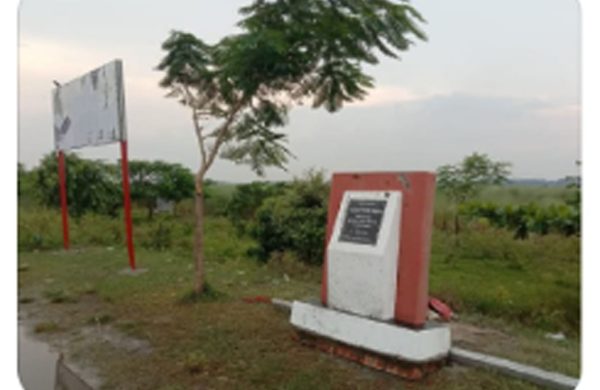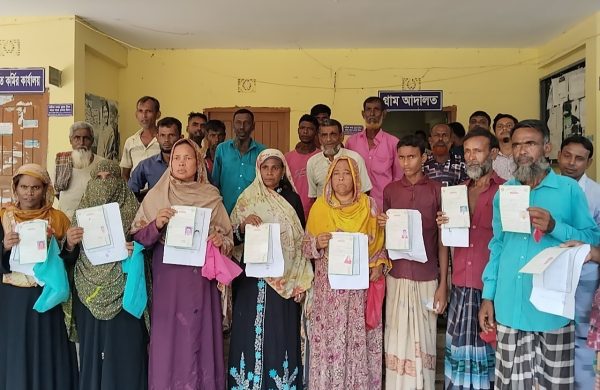Tough challenges ahead for our agriculture
- Update Time : Saturday, September 7, 2024

–Saifullah Omar Nasif–
Bangladesh is undergoing significant changes with the recent shift in government, a transition carrying profound implications for many sectors, particularly agriculture. As the backbone of the country’s economy, agriculture not only sustains a large portion of the population but also plays a crucial role in ensuring food security and rural developmentcontributing around 11% to the national GDP and employing nearly half of the workforce. The sector is characterized by smallholder farms, with most farmers cultivating less than two hectares of land.
Despite its importance, the agricultural sector in Bangladesh faces numerous challenges. These include limited access to modern technology, inadequate infrastructure, and a lack of financial resources. Additionally, the sector is highly vulnerable to the impacts of climate change, such as rising temperatures, erratic rainfall, and frequent natural disasters like floods and cyclones. These factors have led to declining productivity and increasing uncertainty for farmers.
The existing agricultural policies in Bangladesh have struggled to keep pace with the evolving needs of the sector. Many policies are outdated and do not adequately address the challenges faced by modern farmers. For instance, the subsidy system, while beneficial in some respects, often fails to reach the most vulnerable farmers and can lead to market distortions. Additionally, there are gaps in extension services, leaving many farmers without access to the information and support they need to improve their practices.
With the new administration in power, there is renewed hope and anticipation among farmers, policymakers, and stakeholders regarding the future direction of agricultural policy.The new interim government should articulate a vision for transforming Bangladesh’s agricultural sector to make it more resilient, sustainable, and inclusive. Their promises should include introducing innovative technologies, revising outdated policies, and empowering farmers through education and financial support. In this article, we suggest the current interim government to vision for agriculture highlighting the current state of the sector, the challenges it faces, and the key policy shifts that should be taken place.
The fall of previous government in Bangladesh brought about a significant change in leadership, marking a new chapter in the nation’s political landscape. This change comes at a time when the country is grappling with multiple challenges, including climate change, economic disparities, and the need for sustainable development. Agriculture, being a vital part of Bangladesh’s identity and economy, has naturally become a focal point of the new government’s agenda.We should now campaign heavily for a platform of agricultural reform to address the longstanding issues plaguing this sector. Our manifesto should highlight a commitment to modernize agriculture, improve the livelihoods of farmers, and ensure food security for all citizens. The leadership’s understanding of agriculture’s role in the country’s development will be evident in their proposed policies, which will aim to strike a balance between increasing productivity and ensuring environmental sustainability.
The new government’s vision for agriculture should be rooted in the principles of sustainability, innovation, and inclusivity. One of the central promises should be to modernize the agricultural sector through the adoption of advanced technologies and innovative practices. This includes promoting precision farming through nano and biotechnology, expanding the use of digital tools, and encouraging the development of climate-resilient crops. The government also need to plan to invest in research and development to foster innovation and ensure that farmers have access to the latest agricultural techniques. This also includes the use of drones for crop monitoring, sensors for soil analysis, and digital platforms for market access and information sharing.
Another key aspect of the government’s vision should be to enhance the financial security of farmers. This involves revising subsidy policies, improving access to credit, and ensuring fair prices for agricultural produce. The administration needs to pledge to implement measures that will protect farmers from market volatility and provide them with the necessary support to invest in their farms.Furthermore, the government should aim to address the challenges posed by climate change by promoting sustainable farming practices. This includes reducing the reliance on chemical inputs, encouraging green farming, and improving water management practices. The leadership should commit to developing policies that not only boost productivity but also preserve the environment for future generations.
The revision of subsidy systems is likely to have a mixed impact on farmers. While more targeted subsidies could provide better support for those in need, there may be challenges in implementing these changes effectively. Ensuring transparency and accountability in the distribution of subsidies will be essential to avoid the pitfalls of the past.For other stakeholders, such as agribusinesses, researchers, and development organizations, the government’s focus on innovation and sustainability presents new opportunities for collaboration and growth. The emphasis on research and development could lead to the creation of new products and services, while the push for sustainability may open new avenues for sustainable and environmentally friendly products.
By focusing on modernization, financial inclusion, and sustainability, weaim to address the challenges facing farmers and unlock the full potential of agriculture as a driver of national development. While there are significant challenges to overcome, the proposed policy shifts and strategic priorities offer a pathway to a more resilient, productive, and inclusive agricultural sector. Toimplement these changes, it will be crucial for the government to work closely with farmers and other stakeholders to ensure that the benefits of reform are widely shared and that the sector can continue to thrive in the face of future challenges.
The writer is an Agricultural scientist &Doctoral Researcher, University of Newcastle, Australia


















